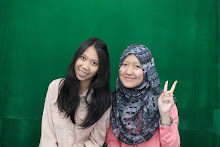In an ideal world, all learning sessions will have perfect participants with all the necessary prior knowledge and are quick to grasp what's going on. However, real life is never that easy and one of the important challenges to address in facilitating any learning session is to be mindful of the audience. Whenever I facilitate such a session I always keep in mind that I have to tailor the knowledge and style of communication according to my audience background. I will like to share an example of how I approach this at a recent session I facilitated with colleagues who are from a largely non-science background, in which we wanted to explore designing an experiment using the scientific method.
The very first thing to do before conducting an experiment is to set a goal. However, I prefer the interactive way where the audience has to set their own goal. So what I did in the session was to display a plant (in a bottle) on the table. I then asked a question, ‘What do plants need in order to survive?’. One of the answers given was sunlight so I then followed up by asking the participants that if the survival of a plant is dependent on sunlight, the quantity and quality of sunlight received by the plant can be a variable for an investigation.
Before that, what are variables? Basically, there are 3 types of variables which are controlling variables (what we never change), manipulative variables (what we change), and responding variables (what changes after the experiment).
The controlled variable is what changes when everything else is kept constant. Using the plant-sunlight example, among the constants will be the type of plant, amount of water, type of soil, same-sized bottles and the temperature of the room. The manipulated variable will be the location to place the plant as we are controlling the quantity and quality of sunlight received. I can for example, place one plant in a dark room while allowing another to be fully exposed to sunlight. After a determined period, you will soon discover that the plant that is kept in the dark will die, and given how both plants are given equal treatment in all other cases, I can conclude that sunlight is essential for a plant to survive.
The objective of my session is to challenge my colleagues to conduct their own experiment using the scientific method. The goal for them is to investigate factors affecting the rate of reaction. The materials are hot water, cold tap water, film canisters, paper cups, clear plastic containers and an effervescent tablet (which produces gas when water is introduced). I used an open-ended approach because I would like them to come up with their own hypotheses and decide their own goals for their experiment.
Group B made another hypothesis on the amount of tablets. They filled up two containers with water, and in each inserted a different sized tablet (whole and half). The container with the whole tablet had visibly more gas produced than the one with the half tablet, as observed within a set time frame.
The five steps in the scientific method are:
1. Setting the goal of an experiment.
2. Making a hypothesis, predicting the outcome to the goal of the experiment.
3. Doing the experiment.
4. Recording the result and making observations from the experiment.
5. Making a conclusion.
1. Setting the goal of an experiment.
2. Making a hypothesis, predicting the outcome to the goal of the experiment.
3. Doing the experiment.
4. Recording the result and making observations from the experiment.
5. Making a conclusion.
The objective of my session is to challenge my colleagues to conduct their own experiment using the scientific method. The goal for them is to investigate factors affecting the rate of reaction. The materials are hot water, cold tap water, film canisters, paper cups, clear plastic containers and an effervescent tablet (which produces gas when water is introduced). I used an open-ended approach because I would like them to come up with their own hypotheses and decide their own goals for their experiment.
The audience were divided into 2 groups; group A and Group B.
Group A made two hypotheses on temperature and surface area to test the rate of reaction. For temperature, they tried different temperatures of water for the same tablet and for surface area, they crushed one tablet into powdery form and using the other in its original form. From their experiment, it showed that the effervescent tablet in hot water reacts faster compared to the one in cold tap water and powder form reacts faster compared to the one in the original form.
Group A made two hypotheses on temperature and surface area to test the rate of reaction. For temperature, they tried different temperatures of water for the same tablet and for surface area, they crushed one tablet into powdery form and using the other in its original form. From their experiment, it showed that the effervescent tablet in hot water reacts faster compared to the one in cold tap water and powder form reacts faster compared to the one in the original form.
Group B made another hypothesis on the amount of tablets. They filled up two containers with water, and in each inserted a different sized tablet (whole and half). The container with the whole tablet had visibly more gas produced than the one with the half tablet, as observed within a set time frame.
Basically, no matter who does the experiment, if they follow the scientific method, they can actually do it, make conclusions and learn something. So, for this sharing session I finally wrapped up with the fact that besides knowing factors affecting the rate of reaction, learners also were introduced to asking questions, variables, hypothesis, observation and drawing conclusions.
























0 komentar:
Posting Komentar